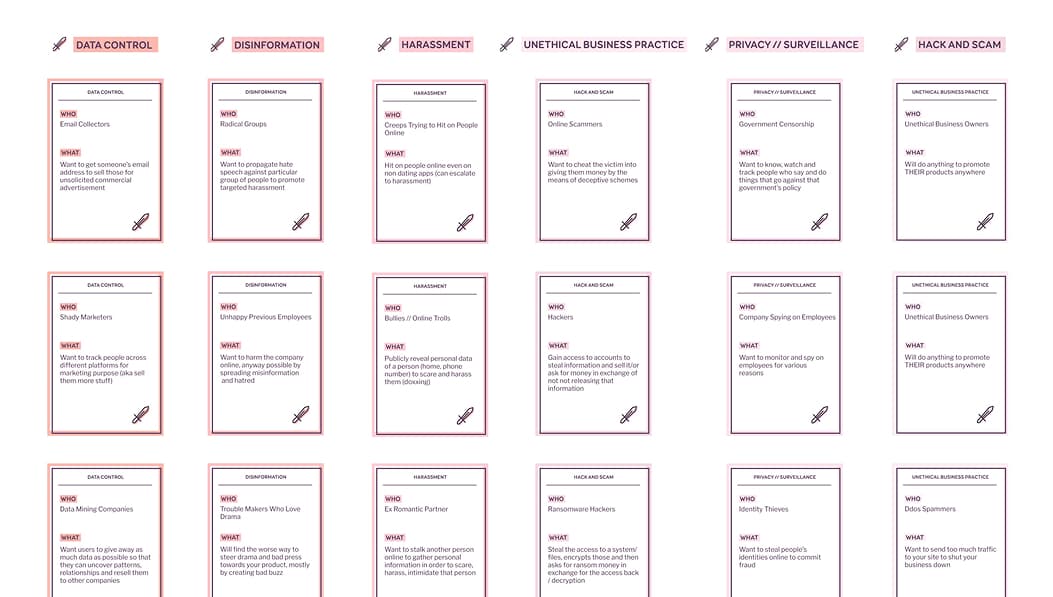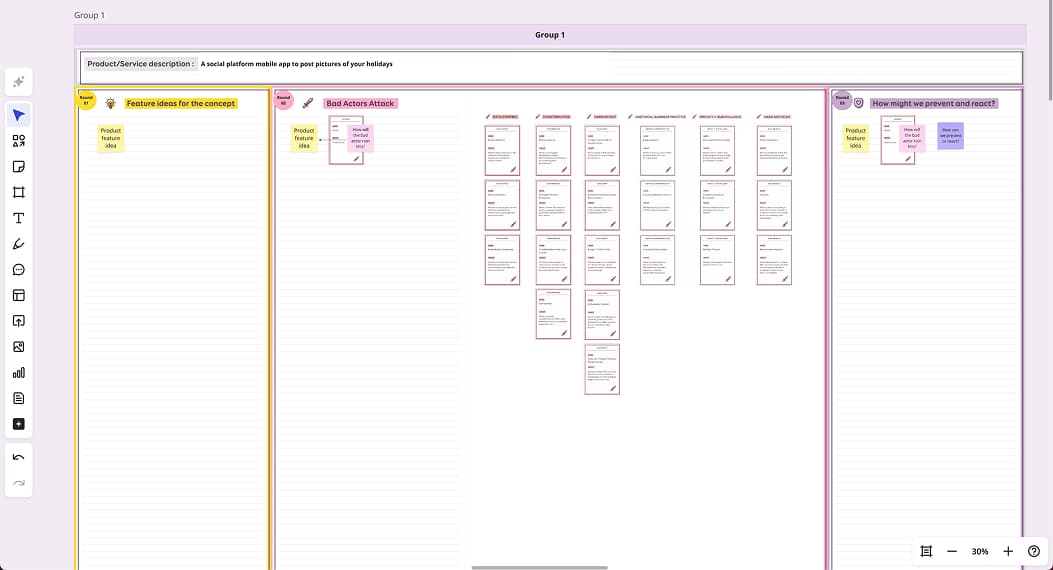Anticipating Risk: A “What Could Go Wrong” Workshop
Most of our designs follow a happy path. We assume all users have good intentions. Nothing will go wrong. We tend to be optimistic. Unfortunately, sometimes, some “bad unethical actors” want to misuse or abuse our products and services. When that happens, companies often react too late. It takes weeks to respond, while users are already affected.
But what if we could anticipate what might go wrong? What if we could spot risky scenarios in order to prepare for it, and prevent it? Or, if we can’t prevent, at least have systems in place to react in a quick way?
Contact me to schedule a Workshop
Workshop Purpose
The goal is to help you anticipate how people could misuse or abuse your product. You’ll learn a method, that you can then re-use with your teams and colleagues, for future projects. You will also prepare clear, concrete responses for when problems occur.
How it works
This is a hands-on, participative workshop.
I have 2 formats possible:
- Online: I can run the workshop, with your team, and a Miro board and digital Bad Actor Cards.
- In person: I will come to your office, with printed cards.
We will look at real examples of how products were misused. Then, you will use the framework and cards, to challenge your own ideas and features. You will do the work.
The bad actor cards

I’ve built a deck of “bad actors” cards, that we will use in this workshop. There are here to help the teams brainstorm what might go wrong. You will of course keep them after the workshop, to re-use for your own projects.
Running the workshop
This workshop runs in three short rounds, in teams:
- Describe: Each team lists features or ideas for a product or concept.
- Challenge: Teams rotate. You review another team’s concept, and use the Bad Actor Cards to imagine how it could be abused or misused.
- Protect: You get your own concept back. You explore ways to prevent those risks or react quickly when they happen.
The process is simple, fast, and easy to repeat with your own teams later.
Timing
Our session should be 120 minutes. The goal being to teach you the method, with a simple example.
Once you run such workshop with your own teams, I would advise to add more time, if you anticipate complex features (like 30 min per extra concept).
Who and When?
This workshop is for designers, strategists, researchers, Q and A people, PMs and anyone who might be involved in product decisions and want to try to prevent harm.
No prior knowledge is needed. If you chose the remote option, please get familiar with Miro before.
We can run it with 2 to 20 people. I advise doing such an exercise during the discovery phase on a real project. But, since the goal of this workshop, is to teach you this re-usable method, it can be done at any time.
What You Will Learn
- Identifying Potential Threats: participants will get examples of what kind of bad actor might try to misuse their product and why, helping them to stay one step ahead of potential problems
- Proactive Risk Management: participants will learn how to identify potential misuse and abuse scenarios of your products upfront and develop strategies to mitigate them before they arise.
- Interactive Tool for Risk Prediction: participants will get access to and learn how to use my risk prediction Miro template. This tool helps teams brainstorm and analyze how people could mess with their system and how to protect themselves.
What you leave with
You will leave the session with:
- A list of risky scenarios tied to real product features.
- Clear prevention and reaction measures.
- A short action plan with owners and next steps.
Then it’s up to you, and your teams to priotise what you want / need to do, to avoid harm in your products.
At the end, you get access to:
- The cards, in a digital and printable format
- A reusable Miro board (for the online format)
- An in-person template (to run it again with your team).
Interested in this workshop?
If you are interested in hosting this workshop (for a conference or a company), please contact me. I will also organize some sessions for designers later this year, so, subscribe to the newsletter to stay informed if you want to participate.
